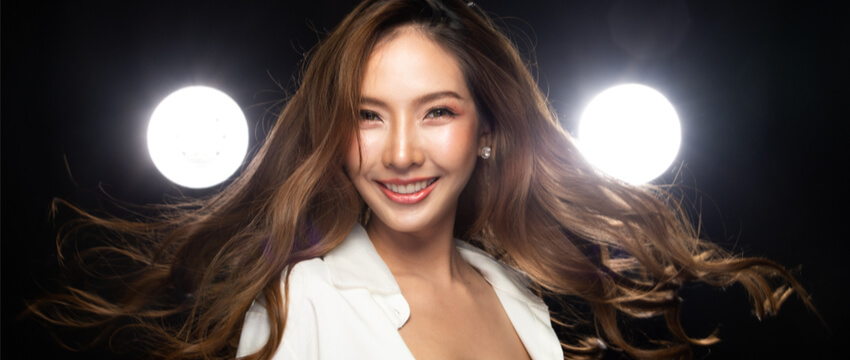Rhinoplasty or nose job, as intricate and complex as it may sound, may still fail. Even the best plastic surgeon may not reach the expectations you have for your nose. And we fully understand that it can be disheartening when your nose job doesn’t provide the results you wanted. After spending thousands of dollars and dealing with a long, uncomfortable recovery, the change may have been too dramatic – or not quite drastic enough. This is where revision rhinoplasty enters the picture. How can a second (or third?) nose surgery improve your overall look?
How can Rhinoplasty Fail?
We are well aware that all surgeries have their own potential risks and complications. We say this not to save or defend plastic surgeons and cosmetic clinics and surgicentres, but because this is the unfortunate truth. No matter how experienced a rhinoplasty surgeon is, with all his reputable credentials and accolades, your primary rhinoplasty can still go sideways. Here are some explanations as to how your primary rhinoplasty can fail.
Failing to follow your surgeon’s instructions
After your primary rhinoplasty, your plastic surgeon would have given you a list of strict dos and don’ts in order to maintain the integrity of your cosmetic surgery. You would have been instructed to follow these reminders to heart. However, because there are patients who neglect its importance, the likelihood of having complications post-surgery gets higher.
Trauma post-surgery
Accidents happen to anyone, anytime, anywhere. Even if you stay indoors and isolate yourself for the first few weeks or months, you are not exempted from this ugly truth. This makes you, and anyone else, at risk of having accidents. Too bad for you, because the effect of this accident may negatively affect your newly-formed nose.
Your nose structure
Having a very thick-skinned nose structure is one of the factors that make nose aesthetics difficult. The after-surgery images of surgical interventions are more difficult in people with thick skin noses. Therefore, people with thick-skinned noses should be extra careful about choosing a plastic surgeon.
How to know that you need revision rhinoplasty surgery
Although we can obviously see if your rhinoplasty surgery needs to be revised, there are some signs and symptoms that may be overlooked. Here are some signs of failed rhinoplasty that you must note:
- If you continue to feel functional issues with your nose related to breathing and nasal obstruction.
- Your nose structure looks crooked or curved more than usual
- The nostrils are too narrow or wide after your nasal surgery.
- You notice the tip of your nose to be abnormally droopy
- You have obvious and very noticeable scar tissue
- The appearance of the nose fails to improve even after a year of surgery.
When can you have your revision rhinoplasty?
If you present with the above-mentioned signs and symptoms, your plastic surgeon would have the expert opinion to recommend revision rhinoplasty to correct your primary surgery. But before that, you need to prepare and make sure that you are a good candidate for another facial plastic surgery.
You have a fully-healed nose.
Your plastic surgery specialist should have advised you beforehand that the final results of your rhinoplasty can only be expected after a year or so. Why? Because the swelling inside the nose can come and go during your recovery period. Waiting at least a year before your revision rhinoplasty can benefit you in two ways: you can make sure that the results of your primary rhinoplasty do not meet you and your plastic surgeon’s expectations, and your nose is healthy enough to handle another surgery.
You have found a reliable plastic surgeon.
When undergoing a second corrective surgery, it is advisable for you to seek the help of your previous plastic surgeon. He is the best person to recognise what needs to be corrected as he knows the history and structure of the inside of your nose. However, patients who underwent rhinoplasty overseas, thinking that they can save money for doing so, may need to seek a different plastic surgeon who can address the correction with ease and expertise. A revision is, more often than not, more complicated than your primary rhinoplasty, so finding someone who has vast experience performing corrective nose surgery is a must.
Allot a reasonable budget for your revision rhinoplasty.
All cosmetic surgery procedures are expensive. However, correcting a failed procedure, as it is more complex and intricate, would, unfortunately, cost you more money than a regular nose surgery cost. The complexity and time involved are more than your first rhinoplasty, the expense is higher. Generally, revision rhinoplasty costs 50% to 100% more than a primary rhinoplasty.
Revision Rhinoplasty: How it Works
 Before diving into a new plastic surgery procedure, your doctor should have discussed with you the risks and complications of a corrective surgery during your initial consultation. Voice out your concerns so that the correction that will be taken address all of them. Your plastic surgeon, in return, would have to be transparent and honest about everything. He would have to help you curb your expectations, and refuse to perform any specific step if it would endanger your health and safety.
Before diving into a new plastic surgery procedure, your doctor should have discussed with you the risks and complications of a corrective surgery during your initial consultation. Voice out your concerns so that the correction that will be taken address all of them. Your plastic surgeon, in return, would have to be transparent and honest about everything. He would have to help you curb your expectations, and refuse to perform any specific step if it would endanger your health and safety.
During the procedure
From the start, the plastic surgeon examines your nose and determines what corrective action needs to be done. Whether the failure involves the function of your nose or just its appearance, he would have to plan out his step-by-step approach to your revision rhinoplasty.
The surgical procedure is usually performed under general anaesthesia. He will follow the same rhinoplasty procedure. But, only now, he will pay more attention to the parts of the nose that need correction. It may be about the nasal septum, nasal valve collapse, cartilage issue, or any part that affects the nose’s aesthetic form and function. Incisions are primarily internal. However, a small external incision is sometimes used. The bone and cartilage of the nose are reshaped. But be careful to preserve the breathing function of the nose. Your plastic surgeon is often able to actually improve nasal breathing for his patients.
Your Recovery after the Revision Rhinoplasty
Since revision patients have already undergone at least one rhinoplasty, they know what to expect from the recovery process. Swelling will last for at least 5 to 7 days, and it can come and go after a few weeks or months following your surgery. Generally speaking, healing from the revision will be a familiar experience. With that said, it is important to follow any pre-or post-op care instructions laid out by your surgeon for best results.
Your decision to undergo revision rhinoplasty is a personal one. Choosing an experienced, board-certified plastic surgeon who has earned your trust will offer the best chance of a successful outcome. Most patients who are unhappy with the outcome of primary rhinoplasty are pleased with the final result from revision rhinoplasty. This is if they follow these simple recommendations. Call us at (07) 3186 8739 so we can help you with all your questions and show you options so we can guide you in achieving your best self.
References:
Revision Rhinoplasty.
https://med.stanford.edu/drmost/aesthetic-services/procedures/revision-rhinoplasty.html
Revision Rhinoplasty.
https://facialplasticsurgery.wustl.edu/cosmetic-surgery/revision-rhinoplasty/
Considering Revision Rhinoplasty? Here’s What You Need To Know.
https://aedit.com/aedition/what-you-need-to-know-about-revision-rhinoplasty
Understanding revision rhinoplasty and why patients seek out this procedure.


Recent Comments